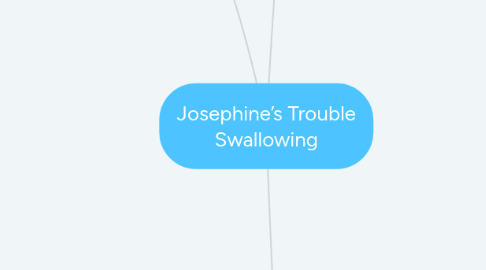Josephine’s Trouble Swallowing
by Christian Ayeni

1. What are the dental care insurance coverage options in CT for Josephine?
1.1. Husky A
1.1.1. She doesn't qualify
1.2. Husky B
1.2.1. She doesn't qualify
1.3. Husky C
1.3.1. She qualifies, but this program only covers bone grafts of the mandible, when there's a need for "a replacement of bone previously removed by radical surgery procedure" (CTDHP).
1.4. Husky D
1.4.1. She doesn't qualify
1.5. Private Insurance
1.5.1. She and her daughters don't have enough money for most private plans that would cover more than Husky C.
2. Are there any dental procedures that would improve her ability to swallow?
2.1. Switch from Amlodipine to Diltiazem. Amlodipine has a potential side effect of dry mouth, while diltiazem does not. Both can be used to manage her hypertension.
2.2. Decrease dosage of Lasix/Furosemide. One of the major side effects is dry mouth. Decreasing the dosage might improve her saliva production.
2.3. Test for Sjogren's Syndrome. Sjogren's syndrome is an autoimmune disorder in which the saliva glands are destroyed. Testing her for this may determine whether this is contributing.
2.4. Verify her smoking habits. Although she hasn't voluntarily mentioned any history of smoking, she may not understand that smoking can cause dry mouth.
2.5. Avoid certain foods: sugar, coffee/tea, alcohol (including mouthwash with alcohol) and caffeinated drinks. These things have been found to cause or exacerbate dry mouth.
2.6. Increase water consumption. Sipping water regularly helps to lubricate the mouth.
2.7. Use a dry mouth/saliva substitute gels like Biotene.
2.8. Use non-alcoholic mouthwashes for dry mouth like Biotene Dry Mouth Oral Rinse.
2.9. Use a humidifier at night.
2.10. Obtain a prescription for a saliva stimulator. The drugs pilocarpine (Salagen) or cevimeline (Evoxac) stimulate saliva production.
2.11. Use an Oxygenated glycerol triesteer (OGT) substitute. OGT has been shown to significantly decrease dry mouth.
2.12. Obtain new dentures with a built-in oral reservoir (maxillary or palatal).
3. Are there any dental procedures that would restore her lost bone?
3.1. Autograft. An autograft of bone, taken from another part of her body (eg. cranium, fibula, illiac crest, radius, etc). While this material has >95% success rate and 0 rejection rate, their can be inflammation at the donor site used to gather bone for the autograft, but may be indicated for Josephine.
3.2. Allografts. An allograft would be taken from another human, but not the recipient. While this eliminates the risk of inflammation at a donor site in the recipient, there may be immunologic responses and more rapid resorption of the bone than with autografts, but may be indicated for Josephine.
3.3. Bovine substitutes Xenografts. These grafts are characterized as causing no immune response, but to be subjected to poor or slow absorption. This may be indicated for Josephine.
3.4. Equine substitutes. These xenografts have been characterized as having the ability to induce osteoblastic differentiation and angiogenesis, but have some ability to lead to disease transmission. This substitute may be indicated for Josephine.
3.5. Porcine substitutes. These xenografts have been characterized as being very similar to human bone, in structure and composition, and, therefore, highly osteoconductive. Additionally, the likelihood of disease transmission is low. However, they have a low absorption capacity, but may be indicated for Josephine.
3.6. Algae substitutes. Unlike some other bone grafts, these xenografts lack antigenicity and inflammatory host response. However, the require several growth factors to be administered in order to be absorbed and induce growth, but may be indicated for Josephine.
3.7. Calcium phosphate alloplastic bone substitute. Like all alloplastic bone substitutes, it caries no chance of infections. Furthermore, calcium phosphate is remarkably similar in composition to natural bone. However, different types of calcium phosphate substitutes suffer lack or resorption or brittleness and may not be indicated for Josephine.
3.8. Calcium sulphate alloplastic substitute. This substitute is readily resorbed, but lacks mechanical strength, which would not be indicated for Josephine'd mastication and swallowing problems.
3.9. Hard tissue replacement (HTR) polymeric substitutes: polymethyl methacrylate. These substitutes exhibit osteoconductive properties as well as compressive strength and elasticity similar to cortical bone, but lacks resorption and may be indicated for Josephine.
3.10. Bioactive glass substitute. This glass substitute exhibits significantly greater strength, relative to calcium phosphates, via its interactions with hydroxyapatite crystals and it's bioactivity and may be indicated for Josephine.



